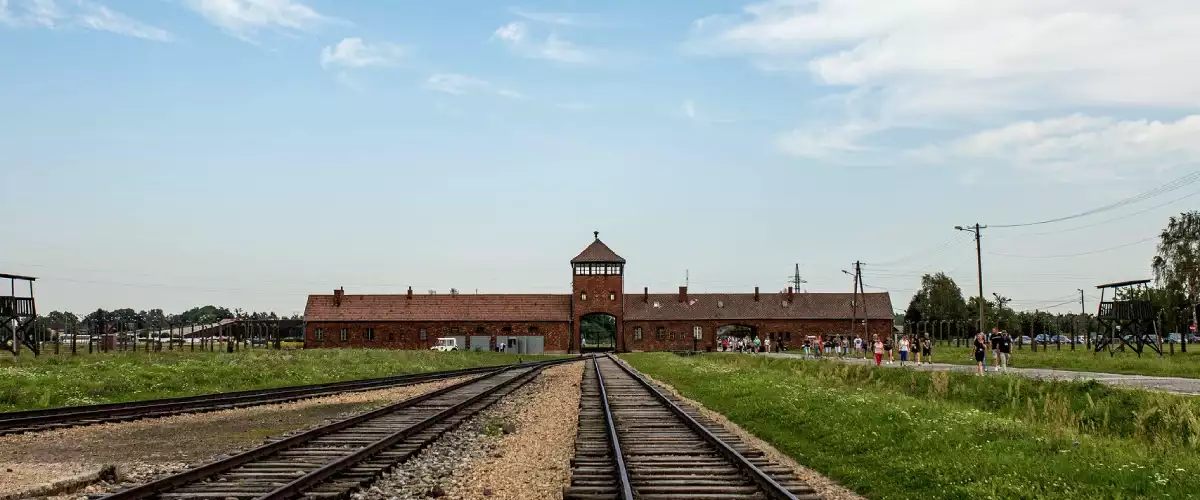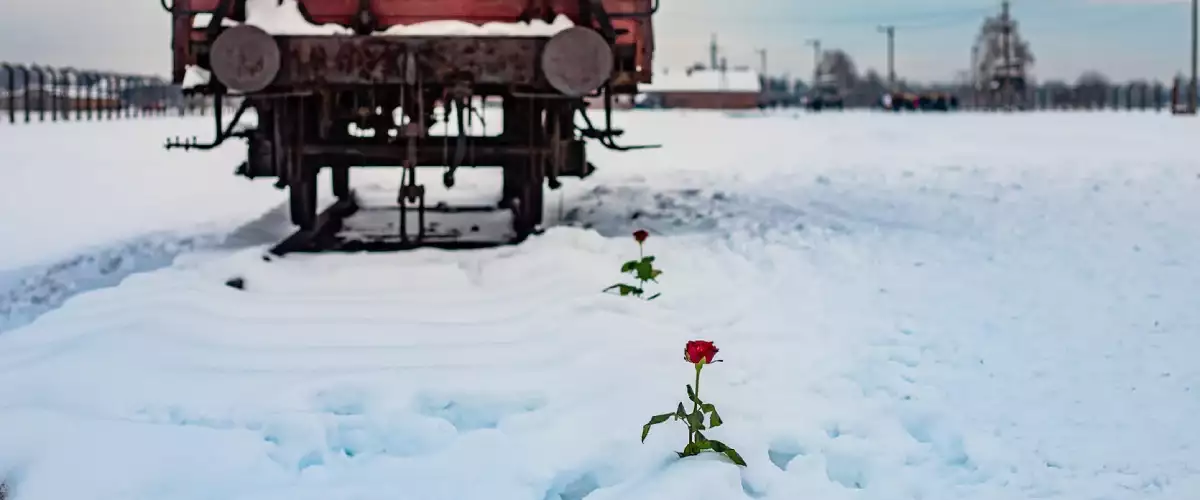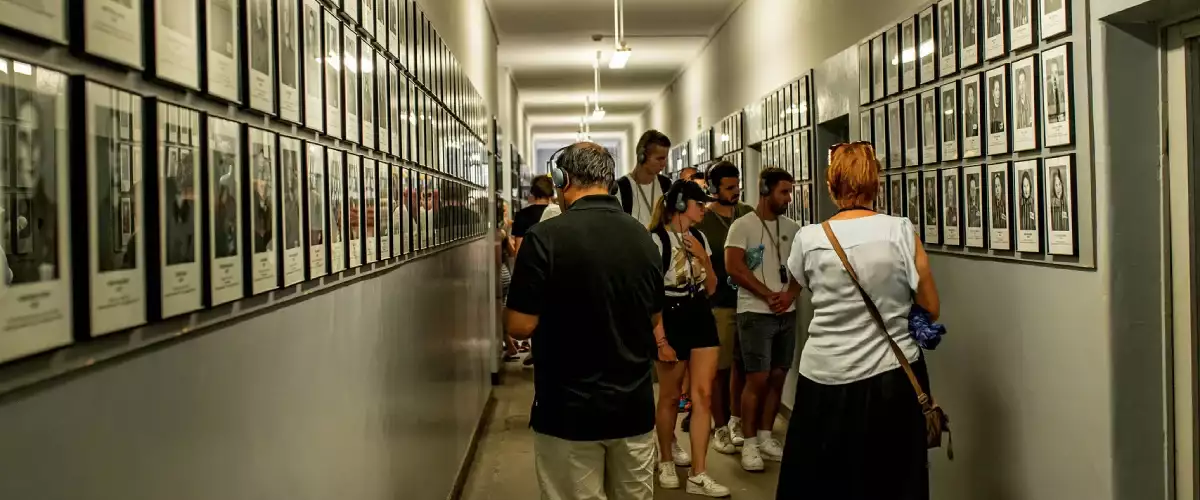
Auschwitz State Museum and Memorial is one of the most important World War II memorial sites in Europe. It is established on the grounds of the largest Nazi concentration camp in existence. It is found in Southern Poland, between the cities of Krakow and Katowice. A visit to the Auschwitz concentration camp is an important pilgrimage in the lives of not just the people related to Holocaust survivors, but also whose, who would like to learn more about this symbol of terror and racial prejudice.
History of the Auschwitz Museum
KL Auschwitz ceased to operate in January 1945, as the Red Army marched through Eastern Poland in an effort to launch a counterattack against the German forces. Not even a year later, after WWII officially ended, the central authorities of Poland stepped in to establish a museum on the area. The question of what area should be within the planned Museum sparked a lively discussion in Poland in the second half of the 1940 s. The various Auschwitz sub-camps were located at considerable distances, sometimes tens of kilometers, from the main camp. Ultimately, they decided to place the 191-hectare site of the two main former camps under protection: Auschwitz I and Auschwitz II – Birkenau. It included: prisoner blocks and barracks, latrines, administration and camp management buildings, SS guard houses, areas where newly-arrived prisoners were received, guard towers, camp gates, several kilometers of camp fences and internal roads and the Birkenau railroad ramp.
The Opening of the Auschwitz Museum
The museum was officially opened on June 14, 1947, gathering several thousands of participants. They were mainly Holocaust survivors, Auschwitz prisoners, Soviet prisoners of war, and other people which life was changed due to existence of this camp. Speakers included also Prime Minister Jozef Cyrankiewicz and Jozef Sak, who was a representative of the Central Committee of Jews in Poland.
In 1957, the boundaries of the Museum were established by a parliamentary act, and the documentation department of the District Commission for the Investigation of Nazi Crimes was transferred from Krakow to Oświęcim, turning it into the Archives Department. The 1960s began with the opening of the first national exhibitions of Czechoslovakia and Hungary, followed a year later by those of East Germany and the USSR. These were the first expositions of this type in the Museum’s history.

1979 – the most important year in the history of Auschwitz Memorial
1979 saw an unprecedented event in the Museum’s history: Pope John Paul II celebrated Mass at the site of the former German Nazi Concentration and Extermination camp, praying for the intentions of all the people murdered there. The year 1979 was also special due to the inclusion of the Auschwitz Museum on the UNESCO World Heritage List.
Auschwitz Birkenau camp after the fall of communism
In 1995, ceremonies are held to commemorate the liberation of Auschwitz Concentration Camp by the Red Army, and two years later the Museum celebrates 50 years of existence. In 1999, due to introduction of the Law on the Protection of Memorial Sites, a protection zone is defined around the former Auschwitz concentration camp. In 2003, a state-of-the-art conservation workshop is put into operation and two years later the International Center for Education about Auschwitz and the Holocaust is established at the Museum.
2006 was the year when UNESCO committee unanimously approved the proposal to change the name of the camp from “Auschwitz Concentration Camp” to “Former Nazi German Concentration and Extermination Camp Auschwitz-Birkenau.” This action was a response to the “Polish Concentration Camps” titles appearing in the Western press, which had nothing to do with the truth and wrongly identified Poles as perpetrators rather than victims.
Auschwitz-Birkenau Memorial and Museum Today
The director of the Auschwitz State Museum is currently Piotr M. A. Cywiński. His deputies are Rafał Pióro, Andrzej Kacorzyk and Anna Skrzypińska. The current structure of the Museum is very extensive, containing many entities responsible for specific tasks. We can distinguish individual departments among them: Archives, Collections, Conservation, and Technical Section, International Center for Holocaust Education, Administration, Legal Services, Accounting.
Over 1.6 million individual visitors passed through Auschwitz in 2023. Compared to the previous year, this is a 40% increase in visitors, but it is still far from the pre-pandemic result when in 2019 the museum had 2.3 million visitors.
Book your tour now and grab a free Walking Tour
International Center for Education about Auschwitz and the Holocaust
One of the most important tasks of the Former Nazi German Concentration and Extermination Camp Auschwitz – Birkenau is to teach and work with young people. The International Center for Education about Auschwitz and the Holocaust in Oświęcim has an enormous role to play. The tragic history of the past century, marked by Auschwitz and the Holocaust, serves as a powerful reminder of the consequences of hatred and contempt. However, as time passes, collective memory is eroding and new waves of nationalism and hatred are emerging. Educators play a crucial role in shaping individual and collective memory and promoting moral values and positive attitudes. To ensure a better future, one may not forget the past or allow the resurgence of hatred.
The value of Auschwitz Museum as a Holocaust education centre
While the history of Auschwitz and the Holocaust can be taught anywhere, visiting the Auschwitz-Birkenau Memorial offers a unique opportunity to learn firsthand about the camp’s history and witness the remnants of the Holocaust. Teaching in such an authentic place fosters a deeper understanding of the tragedy and encourages reflection on current challenges. The International Center at Auschwitz provides educational experiences through guided tours, lectures, and workshops, conveying the history of Auschwitz and the Holocaust. This education aims to instill a profound message of mutual respect in human and international relations, emphasizing the importance of understanding and learning from history.
Educational resources of the Auschwitz Memorial and Museum
Educational activities have always been a priority for the Museum, providing guiding care to numerous pilgrims from the very beginning. Many years of experience have resulted in the creation of the International Center for Education about Auschwitz and the Holocaust. The legacy of the Former Nazi German Concentration and Extermination Camp Auschwitz – Birkenau obliges to carry out such activities. Thanks to these collections, it is possible to conduct scientific research and research work of scientists and students of many specialties. A library of some 30,000 items in various languages and a media library are available to all interested parties. Numerous exhibitions not only inform about the people who tragically perished at Auschwitz, but through their emotional impact enrich knowledge of the tragedy on an individual and social level. The center is constantly evolving to be able to meet the challenges of the 21st century.

Explore the Auschwitz Museum – former concentration camp recognized by UNESCO
Today, you can visit Auschwitz-Birkenau state museum as a part of organized tour from Kraków. The main entrance to Auschwitz is located at 55 Więźniów Oświęcimia St. in Oswiecim, Poland. The distance from Kraków to Oświęcim is around 70 km. At the place you are led by the professional guide, with the headsets, to make your tour comfortable. An average Auschwitz tour last approximately 3.5 hours, and it is divided into two parts: Auschwitz and Birkenau. During this tour you will see many artifacts from the past, as well as gas chambers and crematoria. With the total number of 1.3 million victims including 1.1 million people of Judaism, Auschwitz is one of the most important Holocaust memorials around the world.
Auschwitz Museum is open daily. Check out more information about Auschwitz timings in our dedicated article on the matter.
FAQ
What can you see at the Auschwitz Museum?
Auschwitz I and Birkenau are two former Germar Nazi Concentration Camps. During the visit tourists will see the barracks, cells, outside camps area, remnants of the gas chambers and crematorias.
Who created the Auschwitz Museum?
Auschwitz Museum was created by the Polish State in the area of the former German Nazi Concentration Camp area Auschwitz Birkenau.
Why is Auschwitz Museum open to the public?
It is public because Auschwitz museum is now one of the most important museums in the world which commemorate the memory of the holocaust victims and reminds the extremely difficult lesson of what man is capable of.
When did the Auschwitz Museum open?
Auschwitz Musem was officially opened in 1947 in the area of the former German Nazi Concentration Camp area Auschwitz Birkenau.
Can you visit the Auschwitz Memorial without a guide?
Yes, it is possible at certain times subject to free Entry Passes. You can also buy an individual Museum ticket with an audio guide.
What personal possessions of prisoners can be found at the Auschwitz Museum?
The Auschwitz exhibitions presents personal belongings such as suitcases, glasses, shoes, jewelerry and other more private items.
What items belonging to SS officers can be found at the Auschwitz Museum?
Furniture, helmets, part of clothes and equipment are present at the Museum exhibition
How long does it take to cover the Auschwitz Museum?
The regular tour, covering two parts of the camp last approximately 3.5 hours.
Is photography allowed in the Auschwitz Museum?
Photos without flash are allowed, except the part of block no 4, and the basements of block 11.